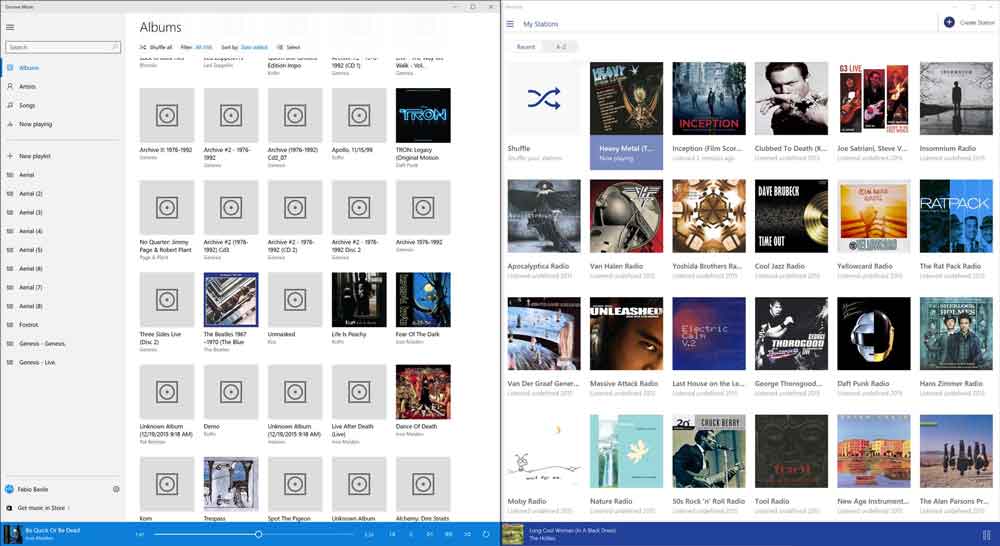Pandora is now a Windows 10 Universal app: should Microsoft be worried about Groove?
Earlier this week, Group Program Manager at Pandora, Katherine Kornas, has announced that the company’s streaming music service, is now available as a universal app on Windows 10.
This is very good news for Pandora Radio, which is facing growing competition from multiple streaming services, new and existing, that do not have similar geographical restrictions. At present the service is still restricted to the United States, Australia and New Zealand, featuring about one and half million songs.

In spite of finding itself as a relatively small player, Pandora is doing quite well, with 79.4 million active users as of 2015, which is on par with music services like Spotify, reporting over 75 million users, however its catalogue count is dwarfed by most music services, including Spotify, which has a catalogue counting 20 million songs.
Groove Music features an even greater worldwide catalogue than Spotify, with 38 million songs available globally, however its market in the US is restricted to 18 million tracks. With that said, there are profound differences between Pandora and other services.
For one thing, Pandora is built atop the Genome Project, a solid algorithm capable of searching and matching music based on 400 very specific parameters. The accuracy of the Genome Project’s algorithm is still unmatched by Pandora’s competitors, who are relying on playlist suggestions curated manually.
The additional cost required to hire professional music experts, often reflects in how the service is delivered to paying subscribers, and this is exactly where Pandora could turn to be a threat to music streaming services, at least in the countries where Pandora is allowed to operate.
The mistake Microsoft needs to avoid, if it ever decides to offer curated stations:
The current trend of Internet music streaming services is to provide consumers with an experience very close to listening old-fashion radio. Paying subscribers of music services like Apple Music, and Samsung Milk, are allowed a premium experience in the form of being able to skip tracks, eliminated ads, and even import their playlists from iTunes and other services.
The one huge problem with these services is the format in which the music is delivered, a format that may work on terrestrial or XM radio, but is absolutely irritating when listening music on a personal device like a smartphone or other portable device.
For instance, paying subscribers of Samsung Milk Music, enjoy their listening experience ad-free, for maybe two or three tracks, until the voice of an unknown DeeJay interrupts the experience with a long-winded lecture on the history of the last track played, which is fine while not doing anything that requires the tiniest amount of concentration, but it’s terribly annoying while working, jogging, or doing any kind of activity that requires a listener to be “in the zone”.
Currently, Groove Music does not feature any such Internet radio station service, beyond the user’s own custom playlists, however, if Microsoft ever takes that route, Pandora is most likely the closest delivery model for Microsoft to follow, to maximize its appeal across all platforms, from iOS to Android, including of course, Windows 10 laptops and Surface tablets.
The bottom line
While Microsoft doesn’t need to be overly concerned about Pandora’s relatively small footprint, the fact that its foothold in the US is bigger than Spotify is a clue that Pandora is still doing something that most other services have not yet narrowed down, which makes Pandora one company to watch very closely, when evaluating the expansion of Groove Music as an organic music streaming service.